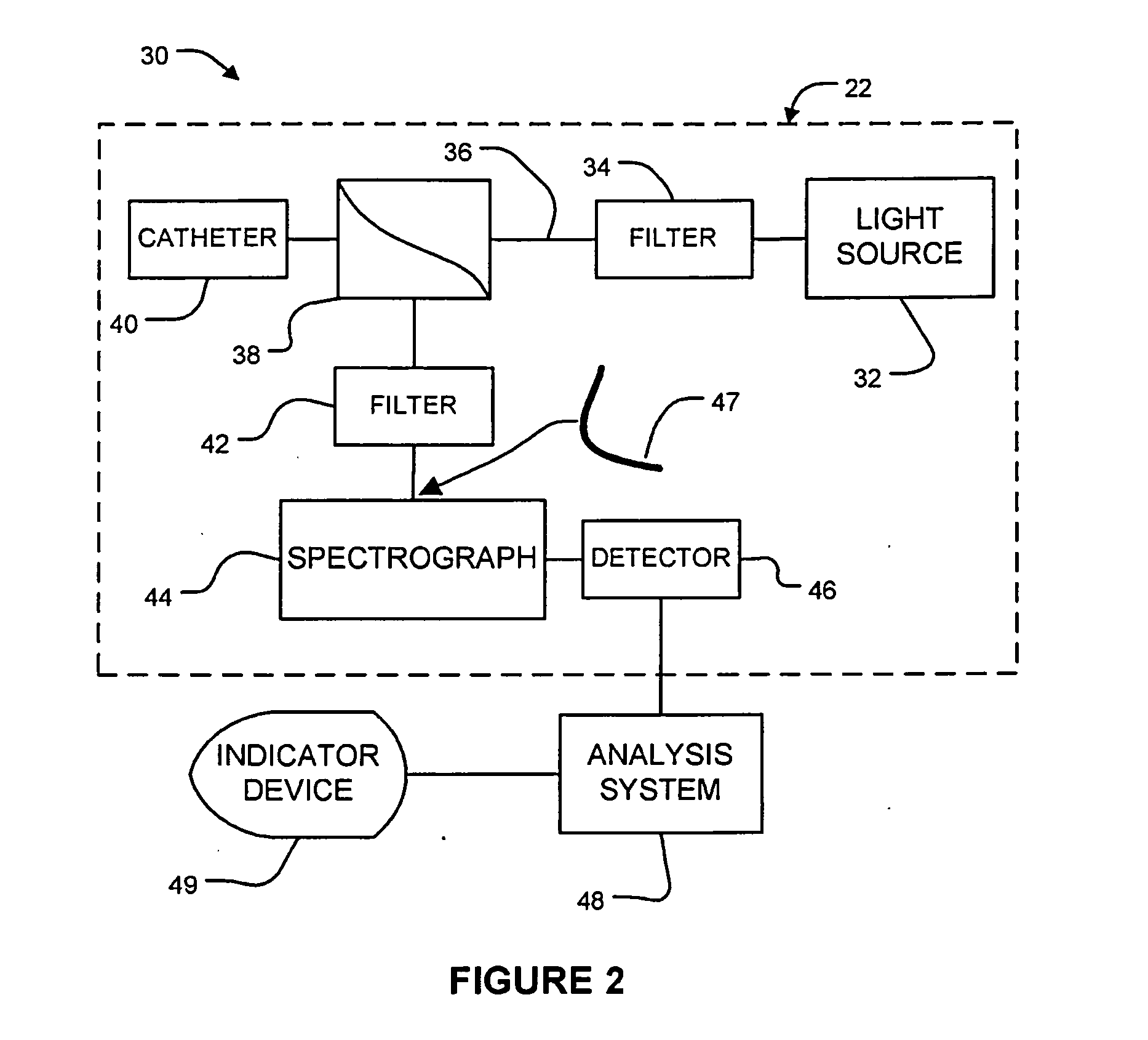Apparatus and methods for characterization of lung tissue by raman spectroscopy
a lung tissue and raman spectroscopy technology, applied in the field of tissues, can solve the problems of many false positive identifications, high false positives, and often fatal lung cancer, and achieve the effect of fast and objective measures
- Summary
- Abstract
- Description
- Claims
- Application Information
AI Technical Summary
Benefits of technology
Problems solved by technology
Method used
Image
Examples
example application
[0125]A bronchoscopist performs a bronchoscopy on a patient and uses a range of imaging modalities (for example AFB+WLB) to identify lesions that merit further investigation. The bronchoscopist is using a bronchoscope equipped with Raman spectroscopy apparatus as described herein. The bronchoscopist places the bronchoscope so that the end of the Raman catheter is adjacent to a lesion of interest and operates the Raman spectroscopy apparatus to acquire one or more Raman spectra for tissue in the lesion. The apparatus analyzes the Raman spectrum in real time and attempts to classify the tissue based on the spectrum. The apparatus generates a signal to the bronchoscopist based on the result of the analysis. As a simple example, the apparatus may display a green light if the analysis indicates a classification of ≦MILD and a red light if the analysis indicates a classification of ≧MOD. In some embodiments, the apparatus may indicate a yellow light if the classification cannot be establi...
PUM
 Login to View More
Login to View More Abstract
Description
Claims
Application Information
 Login to View More
Login to View More - R&D
- Intellectual Property
- Life Sciences
- Materials
- Tech Scout
- Unparalleled Data Quality
- Higher Quality Content
- 60% Fewer Hallucinations
Browse by: Latest US Patents, China's latest patents, Technical Efficacy Thesaurus, Application Domain, Technology Topic, Popular Technical Reports.
© 2025 PatSnap. All rights reserved.Legal|Privacy policy|Modern Slavery Act Transparency Statement|Sitemap|About US| Contact US: help@patsnap.com



